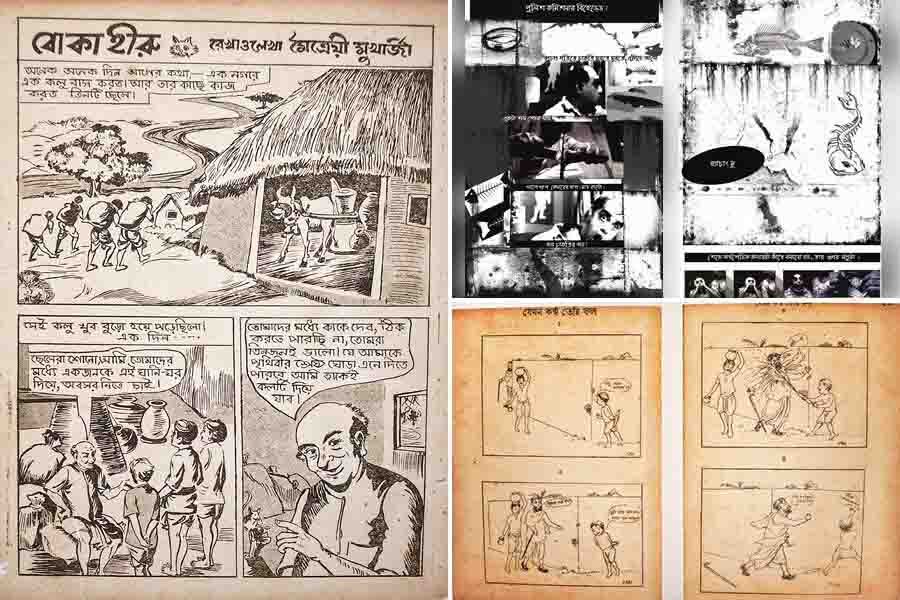In 1921, Sukhalata Rao made history when she told a story about a boy, a milkman and a teacher through four visuals and a few speech bubbles. Thus was created the first Bengali comic strip.
There had been a few earlier attempts at creating comics in Bengali but those were rudimentary prototypes. Sukhalata Rao’s comicstrip, Jemon Kormo Temni Fol, published in Sandesh magazine in 1921, was probably the first consciously created comic in Bengali. It depicted a little boy trying to drench a milkman for adulterating milk, but mistakenly drenching his teacher instead. Sukhalata not only created the panels but also introduced elements such as speech bubbles in the comic.
Inception of Bengali comics
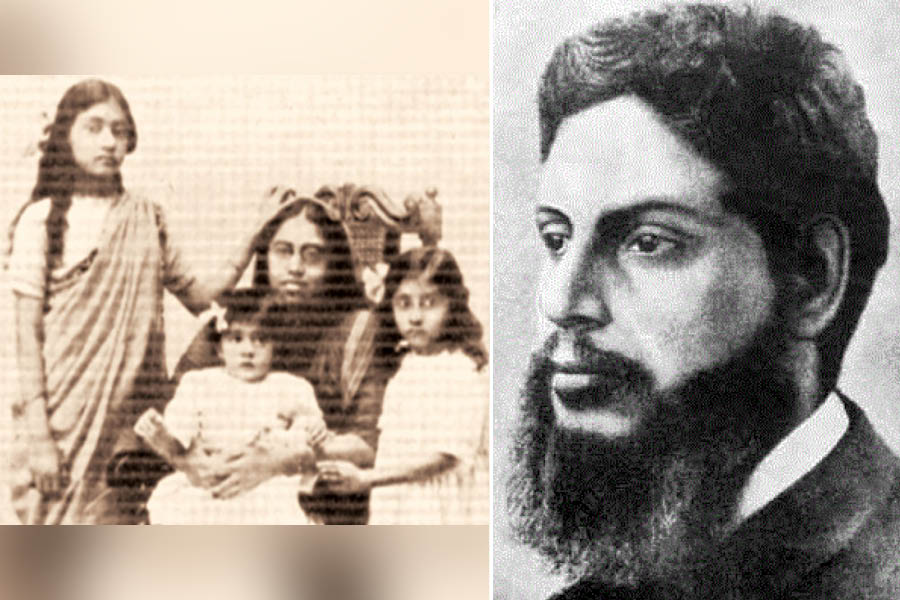
Sukhalata Rao with her children; (right) her father Upendrakishore Ray Chowdhury, who started the first colour children’s magazine, Sandesh, in 1913
Wikimedia CommonsSukhalata’s comics portfolio was not extensive, but her influence remains profound. She followed up her first comicstrip with three or four more, including Ghumer Ghore and Moyrar Chor Dhora. Her work showed a significant influence of Zenas Winsor McCay, an American cartoonist and animator best-known for the comic strip Little Nemo.
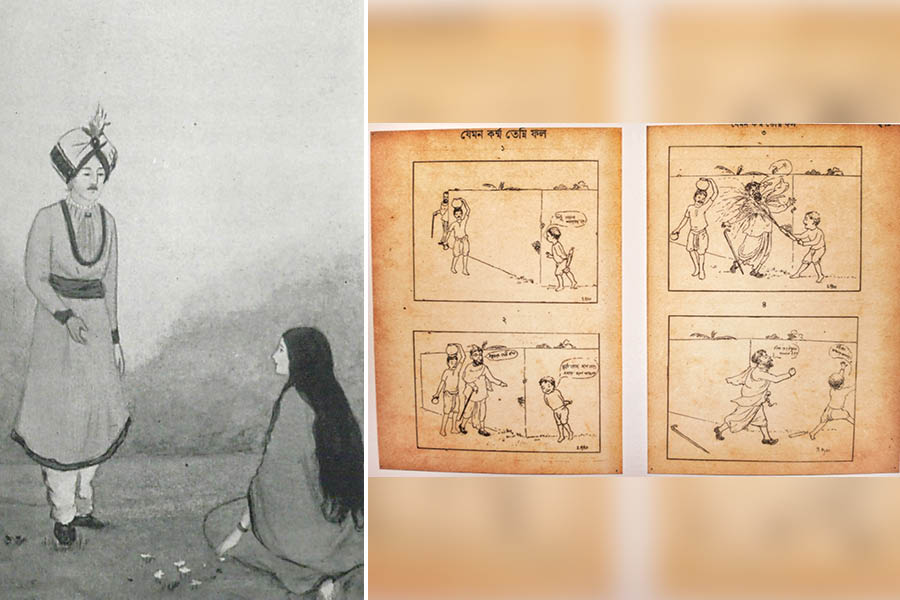
Illustrations from ‘Galper Boi’ (left) and ‘Jemon Kormo Temni Fol’ published in Sandesh (right)
Wikimedia CommonsAs the daughter of Upendrakishore Ray Chowdhury, who started the first colour children’s magazine, Sandesh, in 1913, and sister of Sukumar Ray, Sukhalata’s literary contributions extended beyond comics, encompassing a range of stories and fairy tales for children, including Galpo aar Galpo and Galper Boi.
Absence of women comic creators for years
After Sukhalata, there was a noticeable absence of women comic creators in Bengali till around the 1970s. It was Maitreyee Mukhopadhay, who emerged as a prominent figure during this time, with her comics being published in Shuktara and Nabakallol magazines. She created a total of 11 comics, including Boka Hiru and Ghughur Bhai Phand.
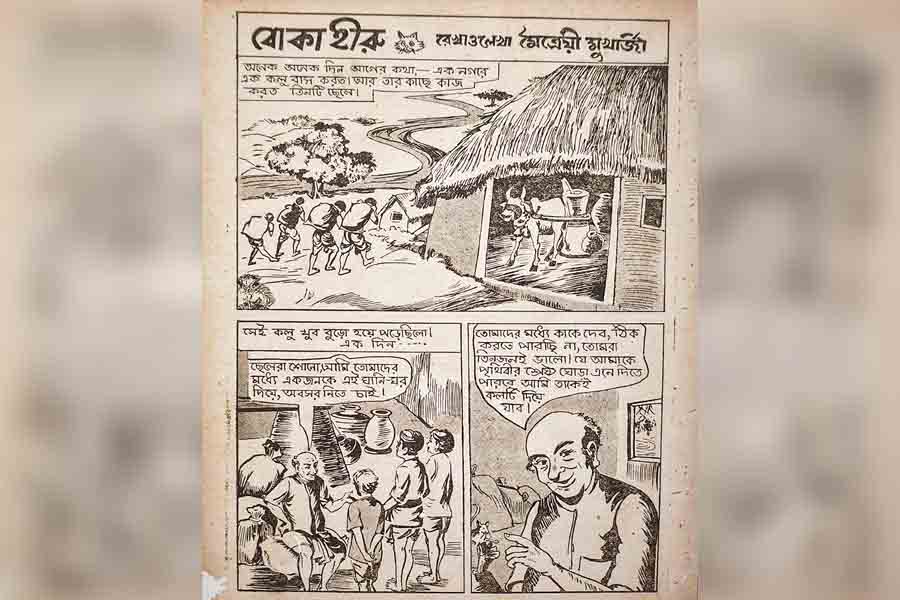
A comic strip from ‘Boka Hiru’
Boka Hiru was published in 1972 and 1973. The story revolved around Hiru — a simple boy — and how a cursed princess, transformed into a cat, regained her human form through Hiru’s love.
Around a decade later, came the works of Kabita Prabhakaran Mukhopadhyay, fondly called Hijbijbij by Satyajit Ray. Her works were featured in Sandesh under the title Nyarar Comics, from 1989 to 1996. Nyarar Comics revolved around a young, bald boy and his mischievous adventures, often involving his pet dog named Neri.
Experimental comics in Bengali
After a long break, Madhuja Mukherjee, a professor of Film Studies at Jadavpur University, Kolkata, experimented with the form around 2013 in a comic adaptation of Kangal Malsat written by Nabarun Bhattacharya. However, this adaptation was more like a graphic novel, which showcased her innovative approach to storytelling.
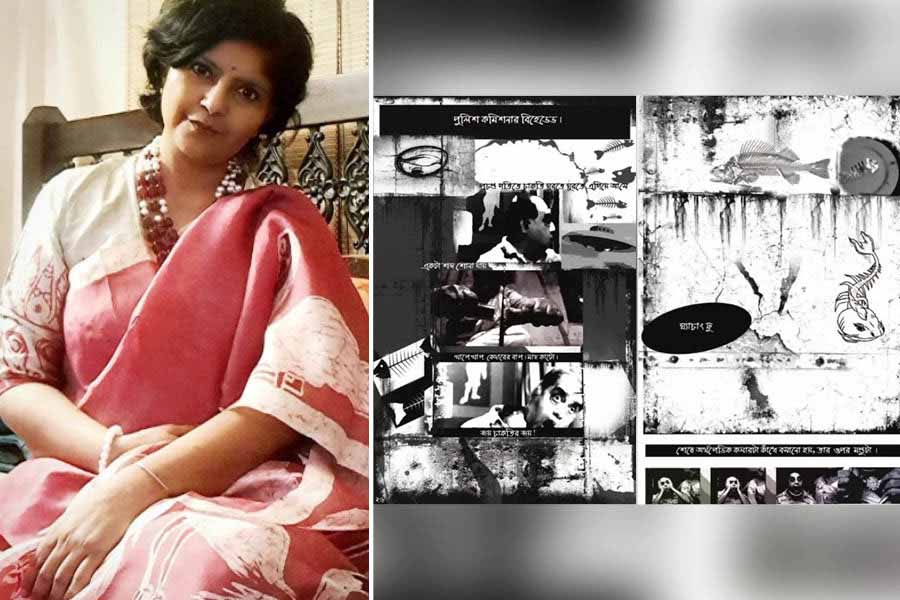
Madhuja Mukherjee and her representation of ‘Kangal Malsat’
InstagramThough women pioneered this pictorial form of storytelling, the representation of women in Bengali comics remains marginal even after all these years.
The presence of female protagonists in Bengali comics are also few and far between. Apart from Narayan Debnath’s Shutki or Mutki, which eventually had to be discontinued, and Tushar Chatterjee’s Mumu, there are only a couple more examples one can mention.


